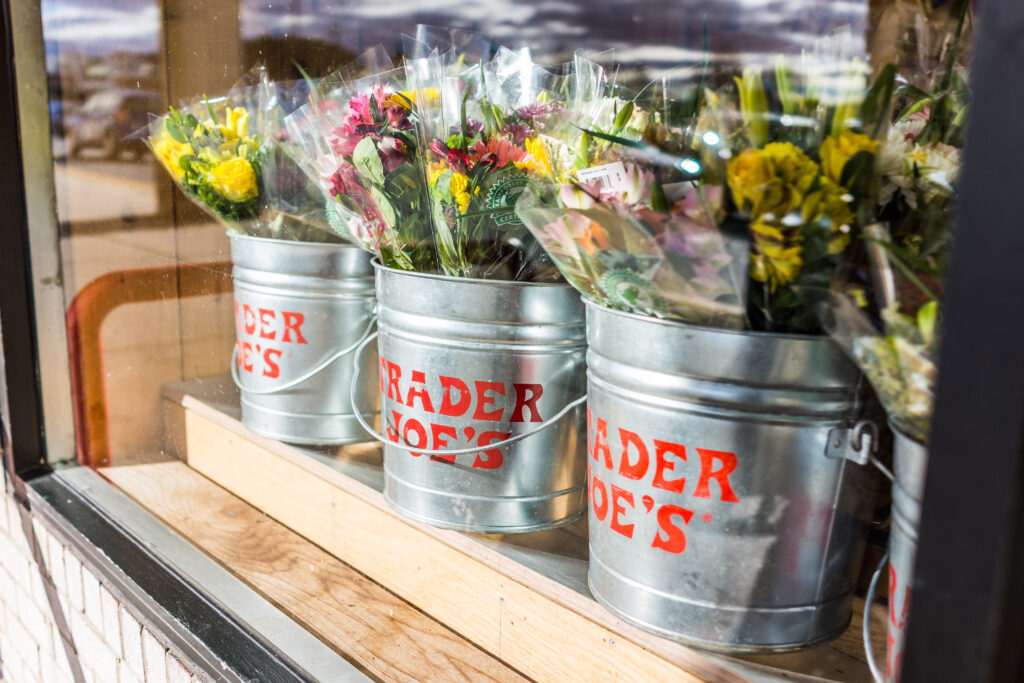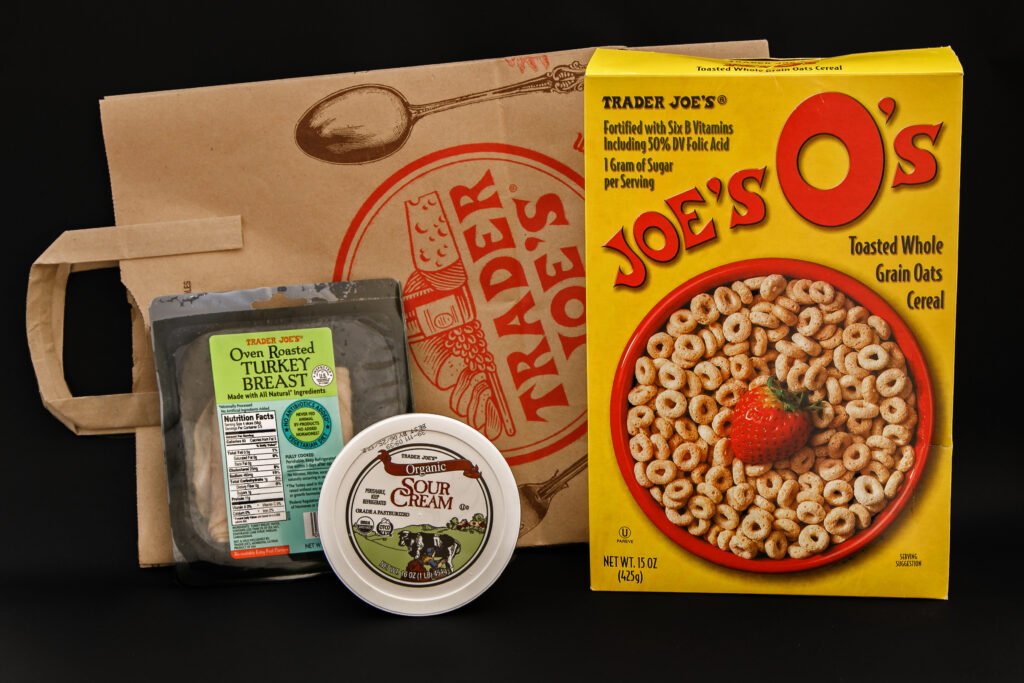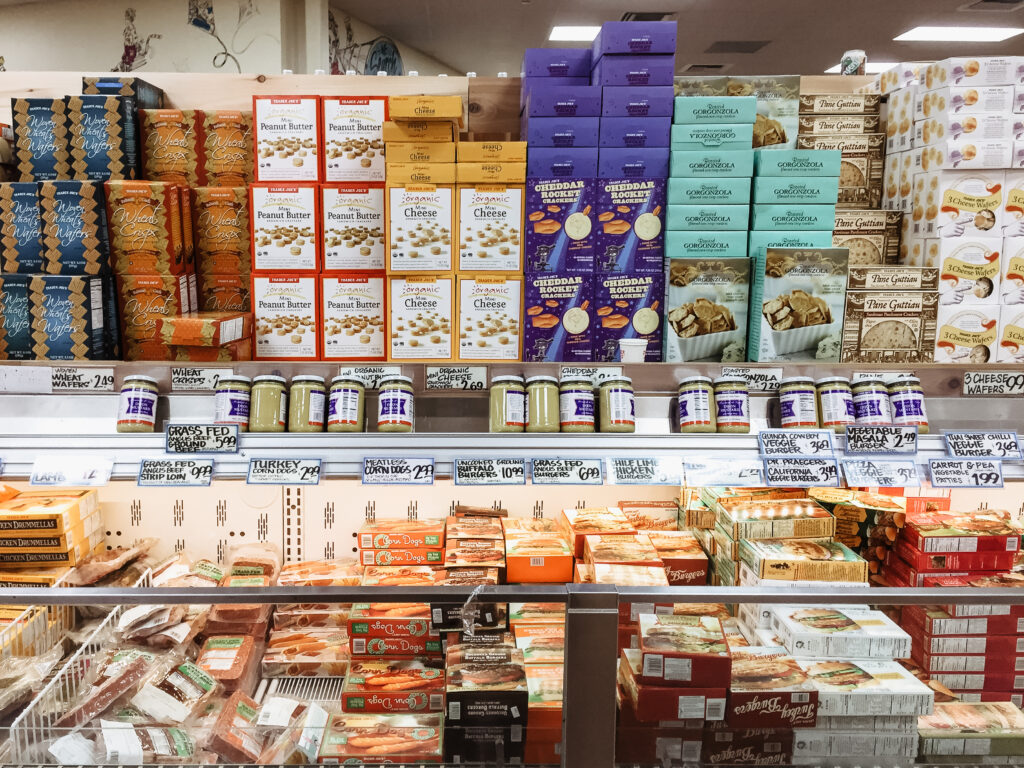While food prices have always been known to fluctuate, the cost of many products has skyrocketed recently, leaving consumers feeling frustrated. The cost of groceries rose more than 11% in 2022, with some foods, like cereals, experiencing price increases of over 15%. Of course, there are lots of waysconsumers can save, but choosing where to shop is often a good first step.
Trader Joe’s, or TJ’s for short, is often touted as being one of the cheapest stores to shop at. Its clientele is known for being a mix of people who enjoy everything from gourmet goods and snacks to healthy eats. From trendy new products that hit the shelves to goodies that seem to spark a cult following, it’s easy to see how it’s become one of the most popular grocery stores around.

How TJ’s Prices Stack Up
Trader Joe’s products are often praised as being less expensive, and investigations by consumer advocate groups and media outlets seem to bear this out. But how much can you really save by shopping at Trader Joe’s compared to a different grocery store chain for everyday staples?
MORE: 9 Secrets About Trader Joe’s You Probably Didn’t Know
Consumers’ Checkbook examined Trader Joe’s prices and found that Trader Joe’s prices were typically 10% to 20% lower than the average prices at other stores it surveyed.
AllRecipes conducted its own research as well, organizing items by categories. It found that buying spices, nuts, seeds, oils and freezer items can help you stack up the savings. It also noticed specialty products for vegan and gluten-free diets were priced better at the store, and found that flowers and live plants are competitively priced.

A recent price-comparison analysis by CNET shows price differences between 50 basic grocery items at Trader Joe’s and the popular northeastern regional chain Stop & Shop, which is also known for having responsible prices.
The publication’s chart comparing the prices of popular items shows that Trader Joe’s is cheaper in almost every instance, including produce: bananas at Trader Joe’s are 19 cents each, while individual bananas at Stop & Shop are 41 cents. Hass avocados are $1.49 at TJ’s and $1.99 at Stop & Shop.
Dairy items were also cheaper at TJ’s, with cream cheese costing $1.69 there and $2.89 at Stop & Shop. A half gallon of organic 2% milk was $3.79 at TJs and $5.69 at the other chain.
You can also get staples cheaper at Trader Joe’s, with a pound of spaghetti available for 99 cents. At Stop & Shop, the cost is $1.49. Organic low-sodium chicken broth costs $1.99 at TJ’s and $3.19 at Stop & Shop, while whole-bean coffee is $4.99 at TJ’s and $8.39 elsewhere.

In general, then, Trader Joe’s prices are lower — sometimes by a few cents, other times by several dollars. Grade A 100% maple syrup, for example, costs just $4.49 at TJ’s and $9.69 at Stop & Shop.
There were only a few instances when shopping at TJ’s didn’t net you a discount: English muffins were at the same price point, while flour tortillas cost 90 cents less at Stop & Shop and a half-gallon of French vanilla ice cream actually cost $2.70 less. Some cheeses are cheaper at Stop & Shop, too.
Overall, the CNet report found the savings on basic items came in at a whopping 33% when comparing store brand to store brand. If a shopper who usually didn’t purchase generic items while shopping at a traditional grocery store made the switch to Trader Joe’s, they’d probably save even more. It’s also worth noting that this research did not factor in weekly sales specials for either party.
How TJ’s Keeps Prices Low
One way the grocery chain keeps prices down is by making sure 80% of the products on its store shelves are from its private label. By cutting out the middleman, as the saying goes, savings can be passed along to the consumer. Of course, this means you have to be willing to buy the private-label items — but these are generally of high quality, and some even end up with cult followings.
The store also makes deals with the few outside vendors it does use — in return for not charging shelving fees, Trader Joe’s gets discounted merchandise.
Additionally, the chain doesn’t spend much on advertising, rarely focuses much attention on packaging and offers few frills in its stores. It cuts down on utility costs by using energy-efficient lighting as well.

Downsides to Shopping at TJ’s
While many — and we mean many — people adore the brand, a few people have offered up valid complaints. For example, some say the store uses too much packaging, which makes shoppers end up with a lot of disposable single-use plastic and hinders air circulation for fruits and vegetables.
Some criticize the produce itself, which can be more inconsistent in quality, appearance and longevity than at other grocery stores. Trader Joe’s also sells produce by package or per unit with prices that typically don’t change much. Other grocery retailers sell produce by weight and prices tend to fluctuate quite frequently, which means you may often be able to get better fruit and veggie deals elsewhere.
Trader Joe’s also offers fewer products overall when compared to other grocery stores, since TJ’s stores have a smaller footprint than the giant supermarkets available to many people. Coupons aren’t available on the store’s private-label brands, either. Of course, these are also reasons why TJ’s can offer cheaper items in general.
Find a Trader Joe’s Store Near You
With more than 550 store locationsto choose from in 43 states, there’s likely a TJ’s in your area. If you’re looking to reduce your grocery bill, you might want to shop there for some, if not all, of your daily staples.
This story originally appeared on Don't Waste Your Money. Checkout Don't Waste Your Money for product reviews and other great ideas to save and make money.


